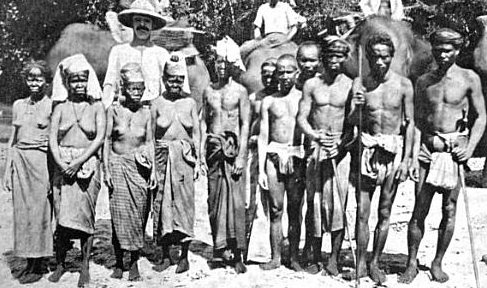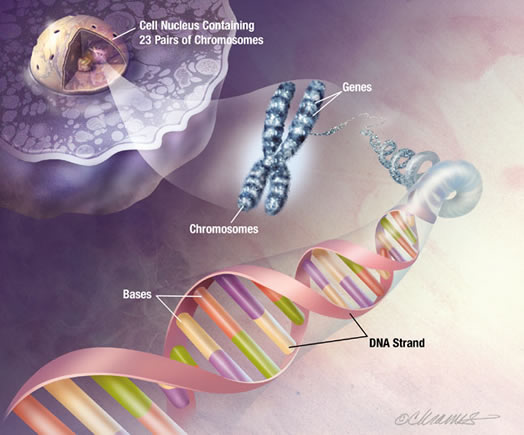 I was going through the internet looking for interesting articles to read last night and somehow I found myself on the Wikipedia article on pygmies located HERE. I was fascinated at these groups of people so I started to read more about them. What really caught my eye in the article was a small section where they tried to explain why the pygmy tribes evolved into such a short stature.
I was going through the internet looking for interesting articles to read last night and somehow I found myself on the Wikipedia article on pygmies located HERE. I was fascinated at these groups of people so I started to read more about them. What really caught my eye in the article was a small section where they tried to explain why the pygmy tribes evolved into such a short stature.
“” Evidence of heritability has been established which may have evolved as an adaptation to low ultraviolet light levels inrainforests. This might mean that relatively little vitamin D can be made in human skin, thereby limiting calcium uptake from the diet for bone growth and maintenance, and leading to the evolution of the small skeletal size characteristic of pygmies.
Other explanations include lack of food in the rainforest environment, low calcium levels in the soil, the need to move through dense jungle, adaptation to heat and humidity, and most recently, as an association with rapid reproductive maturation under conditions of early mortality. (See also Aeta people#Demographics.) Other evidence points towards unusually low levels of expression of the genes encoding the growth hormone receptor and growth hormone relative to the related tribal groups, associated with low serum levels of insulin-like growth factor-1 and short stature. “”
From the passage, I finally figured out the link between Vitamin D , Calcium, and how calcium is really absorbed into the body system. In addition, I also understood the correlation between rapid maturity and height better. The human body needs Vitamin D. Apparently we can take Calcium as a supplement to help with our body growth and density but if there is no Vitamin D that the Calcium can not be properly absorbed into the human body. Recently, I have been following the blog by Dave Asprey on his blog the Bulletproof Executive and he mentioned the need by people for Vitamin D3, and he suggests that we need 1000 UI for every 25 lb of our body weight. So form me, I would need like 7000-8000 UI. I went back to the book the 4 Hour Body by Tim Ferriss and he also mentioned the need for Vitamin D3 . This got me really interested in learning more about the Vitamin D. Apparently we as people really lack Vitamin D. We really need it and the sunlight can give us that Vitamin D. However, sunlight has been given a bad name and Asprey in one of his podcasts say that we should not need sunscreen. That really went against the knowledge of convention. Sunscreen is believed by me (and I assume many others) to be a protective coating we put on to protect ourselves from the sunray from giving us sun burns and eventually Skin cancer. Asprey seems to suggest to me that we should through away the sunscreen and just focus on getting the good sunlight. Apaprently 95% of people who get a blood test to see how their level of Vitamin D intake is highly deficient in it! I now figure out that the importance of getting enough Vitamin D in the body so that Calcium can actually be abosrbed to allow for bone growth and strength.
The other part was to show that apparently if the physical maturity is increased to an earlier age, the eventual full height is decreased. That does make sense since girls are on average shorter than guys. They go through physical maturity and puberty usually earlier than guys so while it is often common to see the girls in Middle School taller than the boys, by High School that trend has reversed as the boy’s height can started to catch up as they finally hit their growth spurts associated with puberty.
I decided to do more research on pygmies to look for more clues on how height is stunted or evolved to be smaller by the pygmies. If I can figure out what exactly was the cause and reason for the pygmies short stature, maybe I can create a method or system that does the exactly the opposite of what happens to the pygmies to increase their height.
Along the way I found this blog which talks about the correlation between the pgymies short stature and their short life term. I will highlight the points which I believe are the most important. Click HERE.
Posted on 19 December, 2007 by Ed Yong
For decades, anthropologists have debated over why pygmies have evolved to be short. Amid theories about their jungle homes and lack of food, new research suggests that we have been looking at the problem from the wrong angle. The diminutive stature of pygmies is not a direct adaptation to their environment, but the side-effect of an evolutionary push to start having children earlier.
Andrea Migliano at the University of Cambridge suggests that pygmies have opted for a ‘live fast, die short’ strategy. Their short lives gives them very limited time as potential parents, and they have adapted by becoming sexually mature at a young age. That puts a brake on their pubescent growth spurts, leaving them with shorter adult heights.
Little people
Pygmies are technically defined as groups of people whose men are, on average, shorter than 155cm (or 5 feet and an inch for the Imperial-minded). Strictly speaking, the word is restricted to several ethnic groups of African hunter-gatherers, like the Aka, Efe and Mbuti. But the world is surprisingly replete with shorter-than-average groups who also bear the colloquial moniker of pygmies, including some from Brazil, Bolivia, South-East Asia and Papua New Guinea.
The earlier explanations for a short stature worked for some of these groups, but they could never account for all of them. Some scientists suggested that smaller people move more easily through dense jungles, but some pygmies live outside forests. Other theorised that they could maintain their body temperature more easily, but many live in cool and dry climes.
One of the more popular theories put forward by Jared Diamond suggested that small people are more resilient to starvation and malnourishment when food becomes scarce. But this can’t be the whole story for Africa groups like the Turkana and Massai manage to be some of the tallest people on Earth despite facing similarly unstable food supplies!
Migliano found more evidence against this theory by comparing the growth patterns of three groups of genuine pygmies – the Filipino Aeta and Agta, and the central African Biaka – with the shortest Americans, whose malnourished childhoods landed them in the bottom 0.01% of the population in terms of adult height.
Together with Lucio Vinicius and Marta Lahr, she found that the true pygmies grew slightly more slowly than the undernourished Americans, their growth spurts ended much earlier, at age 12 rather than 15. Typically, groups who lack free-flowing calories grow slowly over a long time – the pygmies’ pattern matched the first part but not the second. The pygmies’ growth curves disproved the malnutrition idea, but their lifespan pointed Migliano towards a better explanation.
Early death
Pygmies around the world are short in life expectancy as well as height, with the average adult dying at 16-24 years of age. Only 30-50% of children survive to the age of 15 and less than a third of women live to see menopause at 37. Taller African groups like the Ache or Turkana have lower adult mortality and twice the average lifespan, and compared to them, the pygmies’ pattern is closer to that of chimps.
Migliano argues that their early deaths are the driving force behind both their small size and their shorter growth spurts. It pays pygmies to divert resources away from growth and towards having children as early as possible, to compensate for their limited years. Indeed, Migliano found that they reach a peak of fertility earlier than taller groups.
In general, people who grow taller and larger tend to be more fertile and have larger and more capable offspring. That’s obviously advantageous but not if adult mortality is so low that you may not get a chance to have children at all. In this perilous situation, natural selection favours those who mature and reproduce early, to the cost of their growth.
Migliano’s theory has one important missing piece that needs to be filled in – why do many pygmies die early? It is here that the other earlier explanations for their short size may come in, including tropical diseases, thick jungle environments, hot climates and poor nutrition. None of these factors alone can account for pygmy evolution around the world, but Migliano speculates that one or more of them could lower the life expectancies of different populations.
If she’s right, it means that small body size could be an example of convergent evolution, where different groups of people in disparate parts of the globe independently evolved similar solutions to the shared problem of short and hazardous lives.
Me: It would seem that the theory proposed by Migliano makes a lot fo sense from an evolutionary point of view but does not explain the part of why pygmies live such a short age. It makes sense that if I am supposed to live only to be 25 (which I have already passed), I should spend less of my years trying to reach sexual maturity, and spend more of that time reproducing to pass on my genes. If I was given a choice to either have 2 children or wait 5 years to grow another say 5-6 inches, when my lifespan is supposed to be just 25 years, I would take the first option.
The take-away I am getting from this amazing study is that to increase height and avoid short stature, we want to try to delay sexual maturity from occurring to give the young children more time to grow in height. This can involve getting the children to be more active, to release their growth hormones, eat healthier food, and get more sleep. Studies have shown that kids who are inactive, who eat junk food, and who don’t sleep well all seem to go through sexual maturity faster than their counter parts, as well as decrease the rate of their height growth when they are going through the puberty process. Coincidently, this was the exact reason why Robert Wadlow grew to his amazing height. Apparently his hypertropic pituitary gland produced so much growth hormones that the hormones actually prevented him from ever being able to go through puberty and reaching that stage in development where sexual maturity happens. Wadlow even age the age of 22, right before He did, had not gone through puberty.
The other big take-away is that to allow for maximum calcium intake to grow our bones when we are in development, we need to be able to absorb and take as much Vitamin D as possible.
 If one does any research and study of human size for an extended amount of time, one rule that will pop up over and over again is this eco-biological law that states that for a “broadly distributed genus, species of larger size are found in colder environments, and species of smaller size are found in warmer regions.” That law has been reworked to be applied for populations within a species. The varying measured unit is in terms of latitudes.
If one does any research and study of human size for an extended amount of time, one rule that will pop up over and over again is this eco-biological law that states that for a “broadly distributed genus, species of larger size are found in colder environments, and species of smaller size are found in warmer regions.” That law has been reworked to be applied for populations within a species. The varying measured unit is in terms of latitudes.









